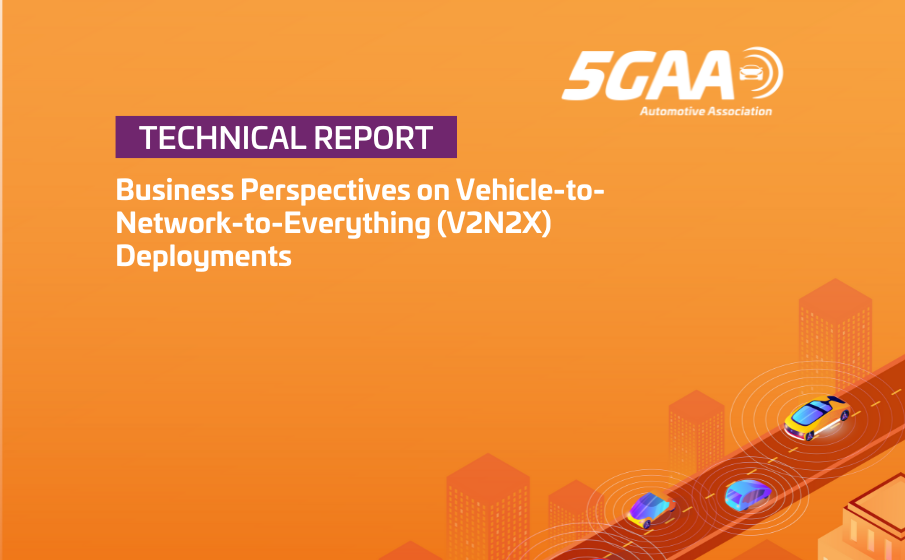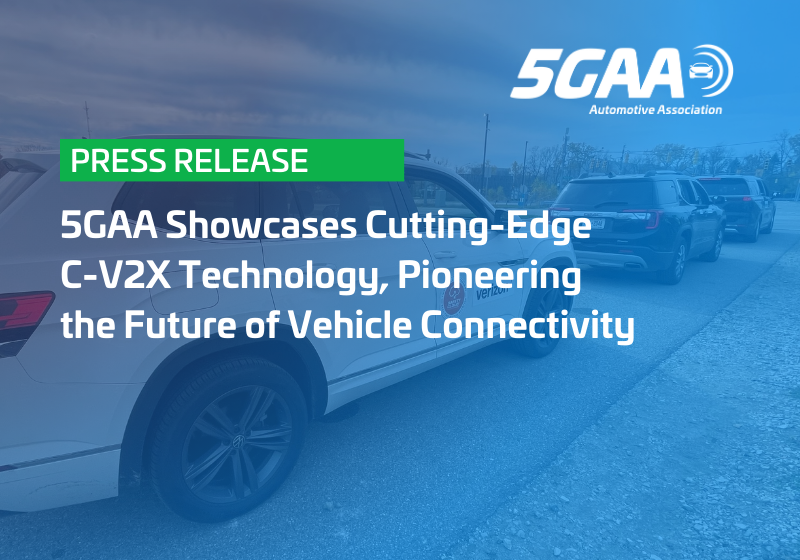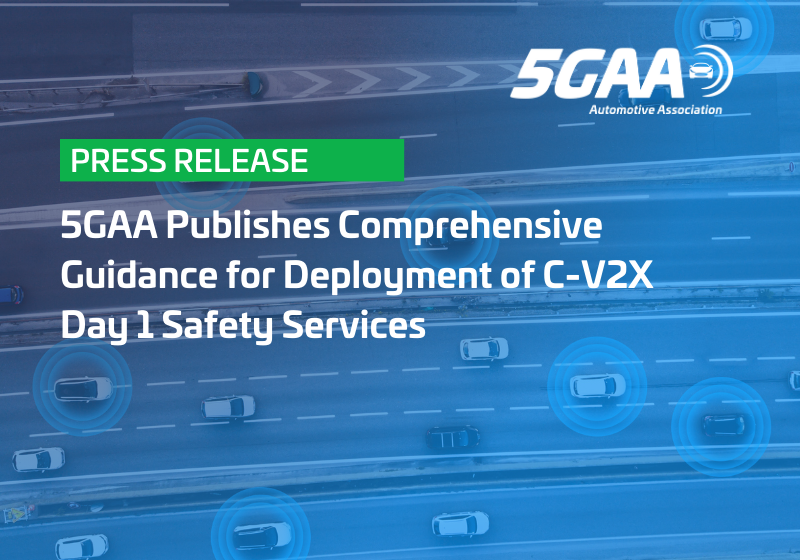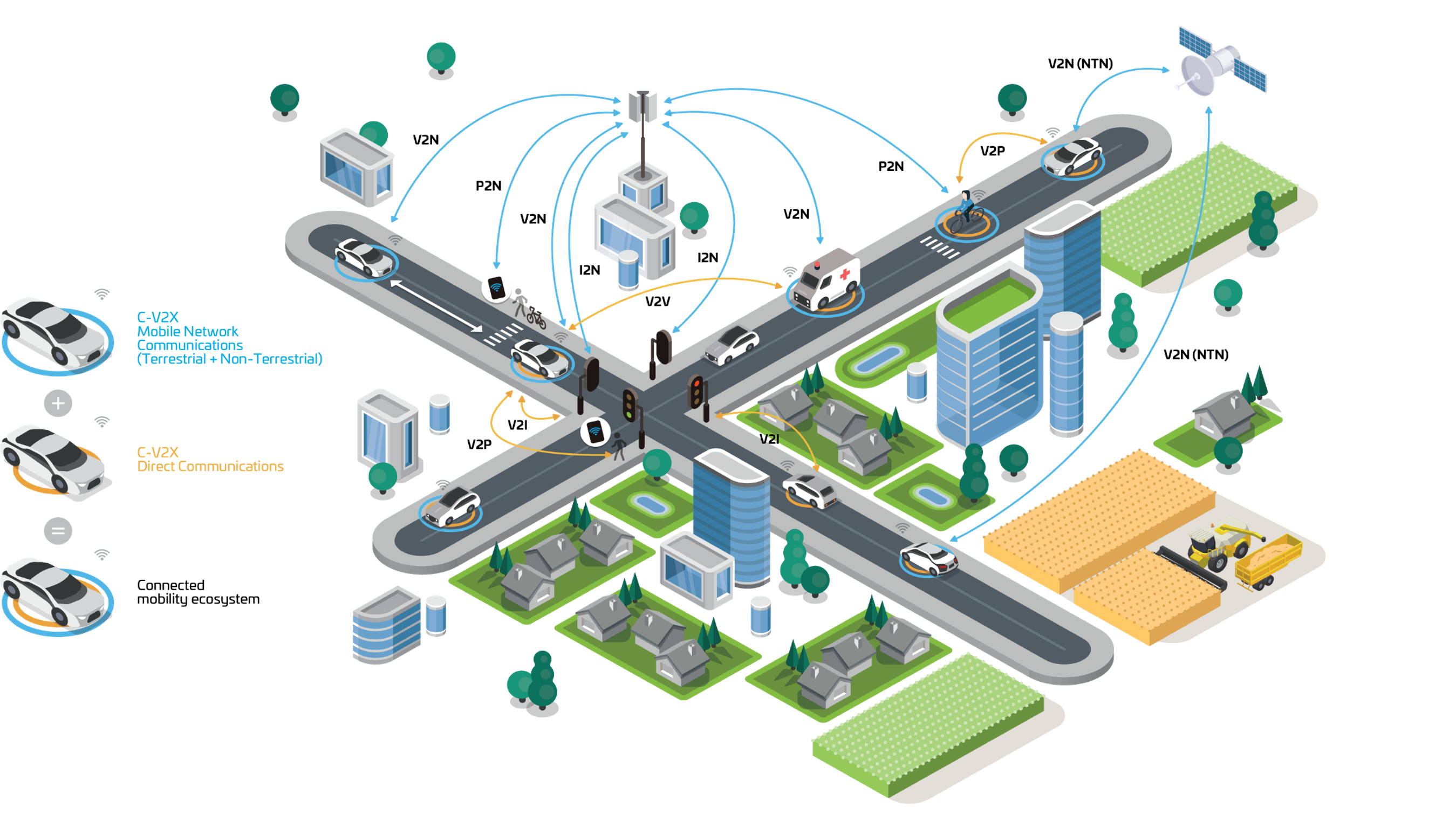General Information about 5GAA
The 5G Automotive Association (5GAA) is a global, cross-industry organisation bridging the gap between automotive, technology, and telecom industries and promoting the C-V2X technology (Cellular vehicle-to-everything), a comprehensive platform for connected vehicles, safety, and transportation.
5GAA was created in September 2016 by its eight founding members: AUDI AG, BMW Group, Daimler AG, Ericsson, Huawei, Intel, Nokia and Qualcomm Incorporated.
5GAA unites now more than 130 companies diverse both in terms of geography and expertise. These include automotive manufacturers, tier-1 suppliers, chipset/communication system providers, mobile operators and infrastructure vendors. Find the full list of members here.
5GAA’s members are committed to helping define and develop global solutions for the next generation of connected mobility and automated vehicle solutions to address the complex challenge of providing enhanced safety, sustainability, and convenience for all road users. Read more about 5GAA’s mission here.
Since its creation, 5GAA has helped transform C-V2X technology from a standard into a market reality and has established 5G as the reference for future automotive connectivity. The association is now regarded as the global lead organisation on automotive connectivity. (link to the 5th anniversary report)
Major publications, reports and white papers include:
- Safety Treatment in V2X Applications
- Environmental Benefits of C-V2X
- Cooperation Models enabling deployment and use of 5G infrastructures for CAM in Europe
- Privacy by Design Aspects of C-V2X
- Tele-Operated Driving (ToD): System Requirements Analysis and Architecture
- Tele-Operated Driving (ToD): Business Considerations
5GAA is working on the basis of 5 association pillars: as the first and overarching pillar, 5GAA aims to bring value to its members. Four main pillars help to achieve this overarching pillar: (1) enable deployment by lifting barrier and accelerating time-to-market, (2) contribute to standardisation via pre-standardisation efforts of automotive connectivity, (3) advocate policymakers by addressing regional opportunities and threats, and (4) leverage innovative solutions within the larger connected automotive community.
The association is contribution-driven and only exists through collaborations and communications between its members.
Between 2019 and 2021, 5GAA’s work focused on eight priority areas: security and privacy, road infrastructure, Vulnerable road users, positioning, interoperability, cellular network, and flexible architecture and technology evolution. All of the priority areas are contributing to the association’s vision: “connected mobility for people, vehicles, and transport infrastructure”. You can find more information on 5GAA’s work here.
The association includes an Executive Committee, a Board, and a General Assembly. The Board, composed of eighteen members elected every year by the General Assembly, supervises and advises the Executive Committee in all respects, in particular with regard to strategic guidance. The Executive Committee is the legal representative body of the association and is responsible for its day-to-day management. You can know more about the 5GAA’s leadership and Board at this link.
In order to address society’s transport needs, 5GAA has seven working groups focused on:
- Use Cases and Technical Requirements
- System Architecture and Solution Development
- Evaluation, Testbeds, and Pilots
- Standards and Spectrum
- Regulatory and Public Affairs
- Security and Privacy
5GAA Working Groups are overseeing the work done in the work programme made of a large number of Work Items. Work Items are time-limited targeted activities which may report to more than one Working Group depending on their tasks. Outputs from Work Items can take many different shapes: Technical Report, Technical Specifications, White Papers, measurements, prototypes and/or demonstrations.
5GAA believe true ecosystem cooperation must be achieved around sustainable business models. An ecosystem that would gather the whole value-chain of connected mobility, seamlessly interacting with partners and standardisation bodies.
5GAA collaborates with different actors active in many fields: Standardisation bodies, Testing, Conformance and Interoperability organisations, Promotion Groups and Think Tanks, and regional organisations. 5GAA is also part of several European and national projects related to 5G networks and connected mobility. You can discover more on 5GAA’s partnerships here.
Friends of 5GAA is a group subscribing to a global newsletter addressing issues of interest and concerns to organisations that are not members but would like to keep up-to-date on 5GAA’s activities: typically road operators, ministries, public bodies, etc. They can also engage with the 5GAA members to identify synergies and business opportunities to accelerate and streamline the deployment of connected automotive.











